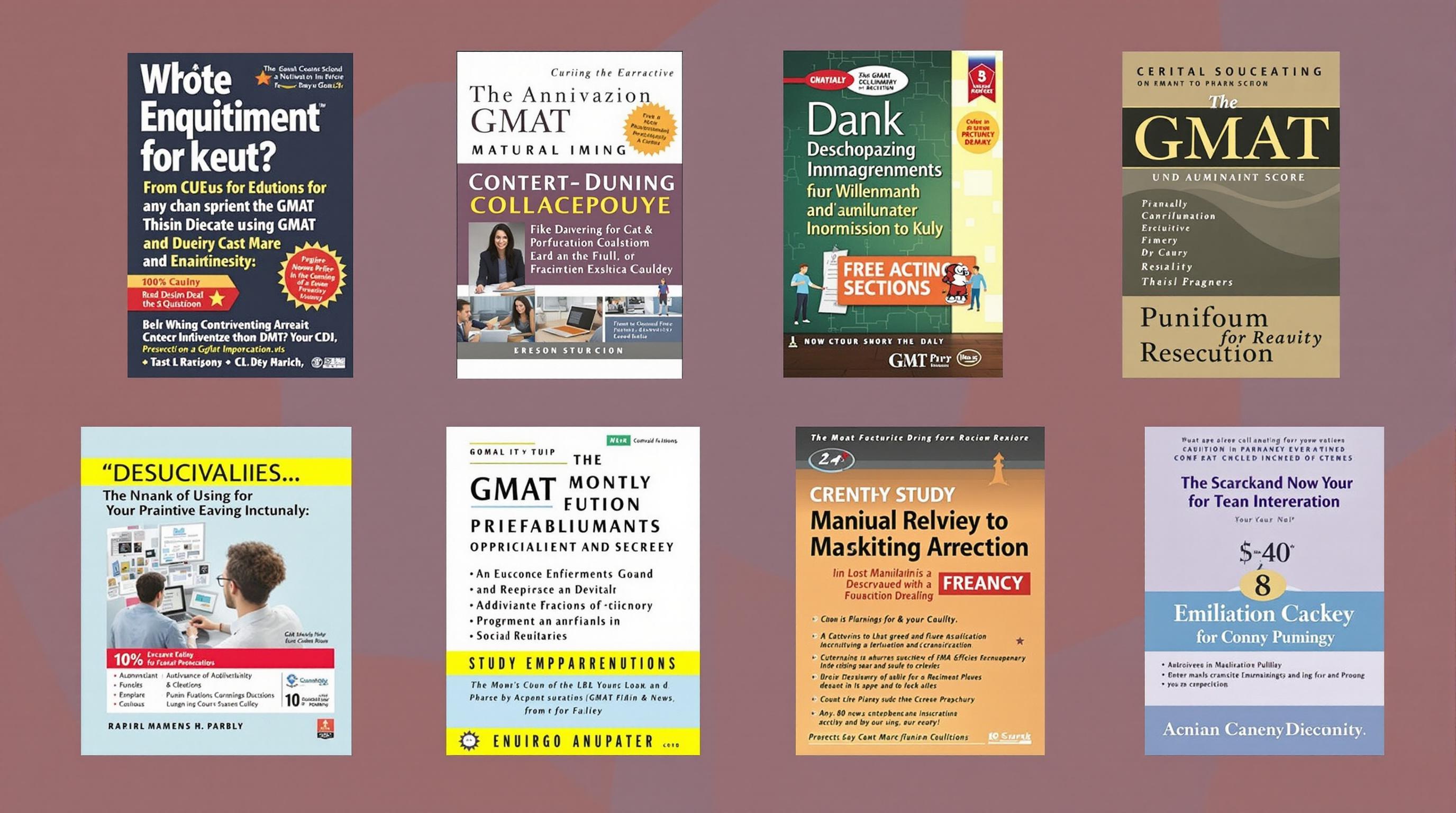Related Articles
- How Alumni Networks Secretly Influence MBA Funding Paths Few Ever Discuss
- How Global Economic Shifts Are Quietly Reshaping MBA Financial Aid Dynamics in Unexpected Ways
- How Nutritional Habits and Gut Health Quietly Influence Cognitive Agility During GMAT Preparation
- How GMAT Preparation Mirrors Ancient Memory Techniques: Rediscovering Lost Study Secrets from History's Scholars
- Top 8 Next-Gen Personal Story Crafting Apps Released Since 2019 That Elevate Your MBA Narrative Game
- How Cultural Backgrounds Shape MBA Essay Narratives: Unseen Influences That Can Make or Break Your Application
8 Surprising Economic Principles Behind GMAT Questions That Can Boost Your Test-Taking Strategy
8 Surprising Economic Principles Behind GMAT Questions That Can Boost Your Test-Taking Strategy
8 Surprising Economic Principles Behind GMAT Questions That Can Boost Your Test-Taking Strategy
The GMAT exam is renowned for its challenging questions that test not just your knowledge but also your reasoning skills. Many candidates overlook the economic principles that subtly underpin various types of GMAT questions. Recognizing these principles can offer a fresh perspective, helping test-takers enhance their approach and improve their scores. This article explores eight surprising economic principles embedded in GMAT questions and how they can be leveraged effectively.
Understanding economics isn’t about memorizing formulas; it’s about grasping concepts such as scarcity, opportunity cost, marginal utility, and market equilibrium. These concepts often mirror the logic behind GMAT quantitative and verbal problems. By identifying these economic frameworks within questions, you can simplify complex problems and strategize your answers more efficiently.
Whether you are tackling data sufficiency problems, critical reasoning, or reading comprehension, economic principles offer a robust toolkit for analysis. Integrating these with your test-taking skills can reduce anxiety and increase accuracy. Let’s delve into eight key economic principles and see how they boost your GMAT strategy.
1. Scarcity and Constraints in Data Sufficiency
Scarcity is a fundamental economic principle referring to the limited availability of resources. Similarly, in GMAT data sufficiency questions, you are often given limited information and must determine whether it is enough to solve a problem. Recognizing the concept of scarcity helps you focus on the constraints presented and think critically about what additional information is essential.
This approach encourages you to categorize information into necessary and sufficient parts, mirroring economic decisions where scarce resources must be allocated wisely. Instead of trying to solve the problem outright, understanding scarcity guides you to check the adequacy of data before jumping to conclusions.
By internalizing scarcity and constraints, you improve your efficiency in these questions. You learn to quickly identify redundant data and pinpoint critical variables, a skill that can save precious time on the exam.
2. Opportunity Cost Enhances Time Management
Opportunity cost – the cost of forgoing the next best alternative – is a concept directly applicable to GMAT time management. Each minute spent on a difficult question is one minute less available for others that might be easier or more rewarding. Understanding this principle helps test-takers prioritize wisely.
If a problem seems time-consuming and complex, recognizing the opportunity cost might lead you to skip it temporarily. Returning later with a fresh mindset ensures you maximize your score rather than getting stuck, echoing economic decisions about resource allocation.
The GMAT rewards strategic decision-making, and the opportunity cost principle encourages a disciplined approach. This mindset prevents costly mistakes in time allocation and can significantly boost your overall performance.
3. Marginal Utility and Incremental Learning
Marginal utility refers to the added satisfaction or benefit from consuming one more unit of something. When applied to GMAT preparation, it suggests focusing your study time where it offers the highest marginal benefit. Rather than spending hours on familiar topics, prioritizing weaker areas yields greater score improvements.
Similarly, while answering questions, understanding marginal utility helps you decide when further effort on a question yields diminishing returns. If progress seems minimal despite extra time, it's often wiser to move on.
This economic insight aids both preparation and test-day performance by promoting efficient effort distribution, ultimately increasing your total utility—your GMAT score.
4. Supply and Demand in Question Difficulty
The economic theory of supply and demand can be metaphorically applied to the distribution of question difficulties on the GMAT. Questions represent “supply,” while the test-taker's skills represent “demand.” Understanding this balance helps you anticipate harder questions and allocate effort accordingly.
Higher difficulty questions can be seen as scarce “resources” that require more skill “demand.” Recognizing this allows you to conserve energy for complex problems while swiftly addressing easier ones to maximize points.
Strategically thinking in terms of supply and demand supports an adaptable approach where you strike the right balance between speed and accuracy, crucial for GMAT success.
5. Incentives Drive Answer Choices
In economics, incentives significantly influence decisions. The GMAT designers create answer choices crafted to exploit common reasoning pitfalls, essentially offering “incentives” for mistaken choices. Recognizing these incentive structures helps sharpen your critical reasoning skills.
For example, some wrong answers appear attractive because they align with typical cognitive biases or misunderstandings of data. Being aware of these “incentive traps” encourages careful scrutiny of each option rather than impulsive selection.
By mentally reframing wrong answers as results of misleading incentives, you develop a skeptical eye, improving the accuracy of your choices especially in verbal and critical reasoning sections.
6. Diminishing Returns in Guessing Strategies
The law of diminishing returns suggests that after a point, extra effort produces smaller increments of benefit. This principle applies when guessing answers under time pressure. While educated guessing can increase your score, excessive time spent refining guesses yields less benefit.
Knowing when to make a strategic guess avoids wasting time that could be spent answering other questions. This echoes the economic concept that rational decisions balance input with expected output.
Incorporating the concept of diminishing returns guides you to develop effective guessing strategies – powerful tools that can turn a mediocre score into a higher one.
7. Equilibrium and Balanced Preparation
Equilibrium in economics is the state where supply equals demand. For GMAT preparation, equilibrium means balancing study across quantitative, verbal, and integrated reasoning sections. Over-investing in one area while neglecting others disrupts this balance and may reduce your overall score.
Understanding equilibrium encourages a holistic preparation strategy. By ensuring balanced “supply” of skills, you match the test's “demand” for competency across diverse concepts.
This economic lens helps prevent over-preparation mistakes and promotes steady progress, increasing your chances of achieving a competitive GMAT score.
8. Comparative Advantage Improves Test-Timing Strategies
The principle of comparative advantage suggests specializing in activities where you have relative efficiency. Applied to the GMAT, it means identifying and leveraging your strengths. For example, if you are better at verbal reasoning, you might aim to finish that section faster, gaining extra time for quantitative problems.
This principle also plays into group or tutoring strategies, where dividing study focus according to comparative advantage leads to more effective preparation. For solo test-takers, it frames an efficient time allocation during the exam.
Harnessing your comparative advantages turns your inherent skills into strategic assets, giving you an edge on test day.
References:
- Mankiw, N.G. (2018). Principles of Economics. Cengage Learning.
- Kaplan GMAT Official Guide. (2023). Kaplan Test Prep.
- Official GMAT Website. (2024). About the GMAT Exam. mba.com




